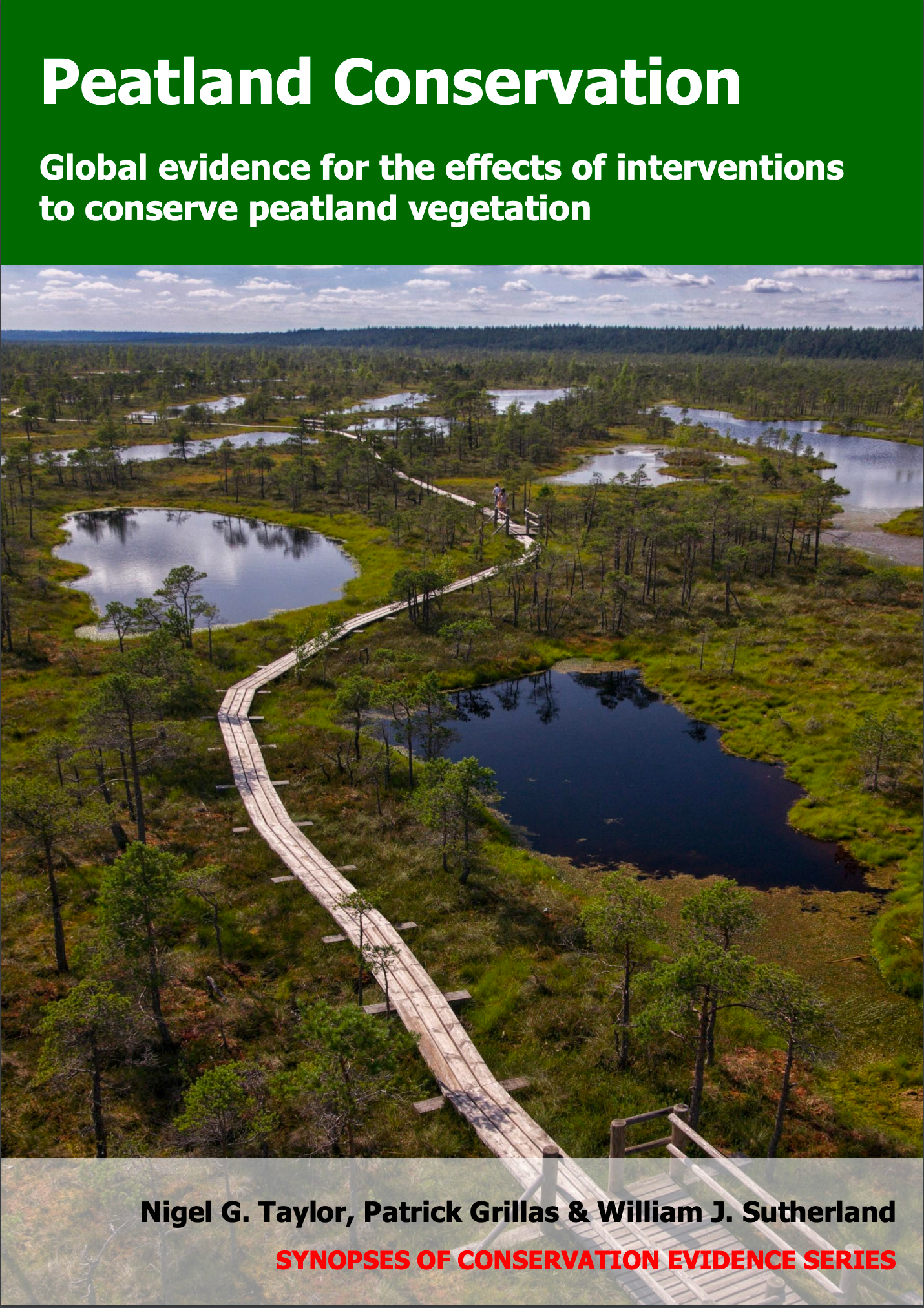Replace blocks of vegetation after mining or peat extraction
-
Overall effectiveness category Unknown effectiveness (limited evidence)
-
Number of studies: 2
View assessment score
Hide assessment score
How is the evidence assessed?
-
Effectiveness
60% -
Certainty
35% -
Harms
10%
Study locations
Supporting evidence from individual studies
A before-and-after study in 1991–1997 in a historically mined blanket bog/heathland in England, UK (Standen & Owen 1999) reported that translocated bog vegetation retained its overall community composition whilst gaining new species, and that adjacent bare peat was colonized by herbs and bog-characteristic plants. These results were not tested for statistical significance. Over six years, translocated bog vegetation retained its overall bog-characteristic community (data reported as a graphical analysis). However, it did gain six additional plant species (before translocation: 15 species; six years after: 21 species) and abundance of fringed bog moss Sphagnum fimbriatum declined (in 15% of quadrats before translocation, but only 3% six years after). Bare peat between translocated strips was colonized by 28 plant species with 48% total vegetation cover, 21–31% grass/rush cover, 10–15% cover of heather Calluna vulgaris and 1–5% cover of five other bog-characteristic species. In 1991, sods (vegetation and 1 m of underlying peat) were cut from a blanket bog remnant. They were moved to eight 4 x 140 m trenches, dug in a site historically mined for coal. Dry peat was spread between the translocated strips. Plant species and vegetation cover were recorded in 1991 (before translocation) and 1997: in 100 quadrats (0.25 m2) in six translocated strips, and in 90 quadrats (1 m2) in three strips between.
Study and other actions testedA site comparison study in 2008–2009 in a fen in Ontario, Canada (Wilhelm et al. 2015) reported that plots where surface peat was replaced developed plant cover and community composition intermediate between hummocks and hollows of an undisturbed plot. These results were not tested for statistical significance. After one year, Sphagnum moss cover was higher in peat-replacement plots (22–35%) than in undisturbed hollows (8–19%), but lower than on undisturbed hummocks (100%). The same was true for shrubs (peat-replacement: 15–20%; undisturbed hollows: 10%; undisturbed hummocks: 50%). For peat-replacement plots, data were not provided separately for hollows and hummocks. Overall community data were reported as a graphical analysis. In April 2008, 30-cm-thick blocks of peat and vegetation were replaced on a 12 x 12 m plot after removal of the underlying peat. An undisturbed plot 80 m away provided a comparison. From May to July 2009, vegetation cover was estimated in 6–18 quadrats/plot, distributed evenly across hummocks and hollows.
Study and other actions tested
Where has this evidence come from?
List of journals searched by synopsis
All the journals searched for all synopses
This Action forms part of the Action Synopsis:
Peatland Conservation
Peatland Conservation - Published 2018
Peatland Conservation





)_2023.JPG)














